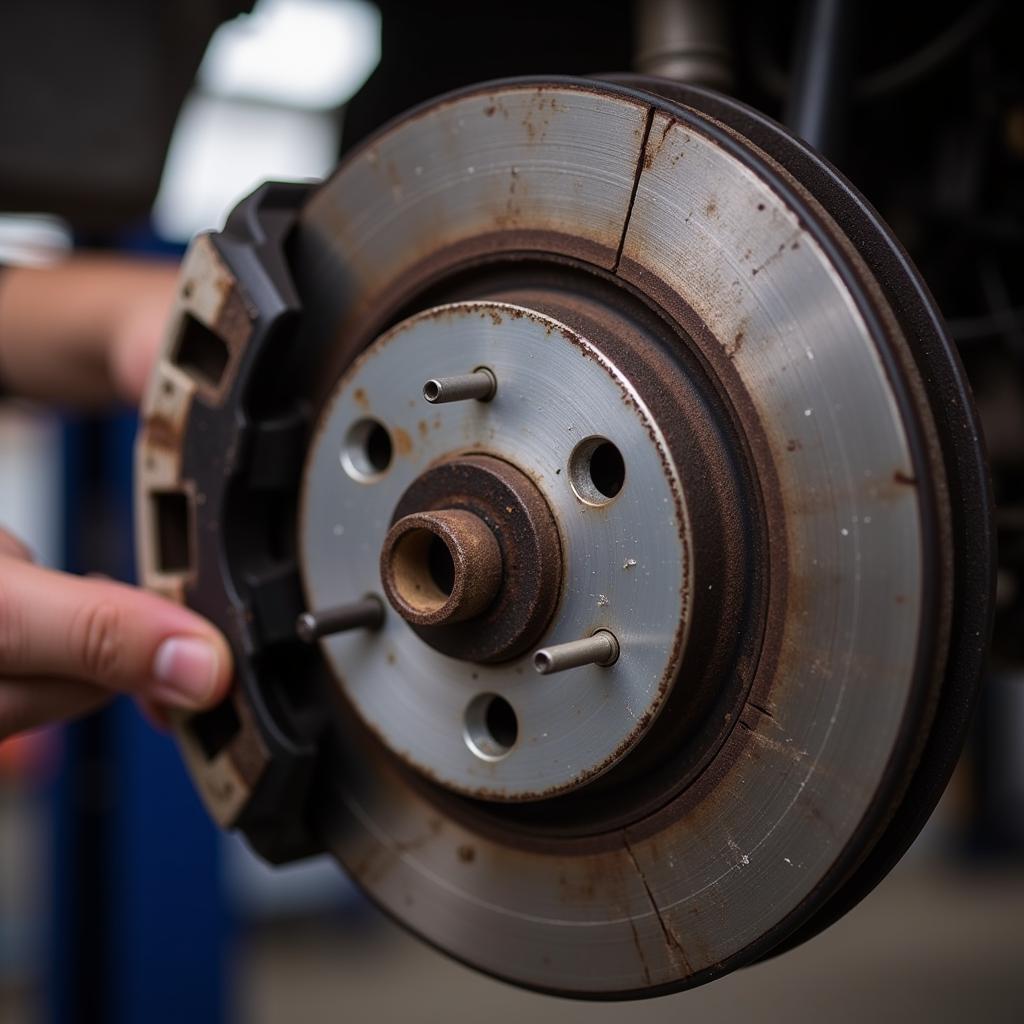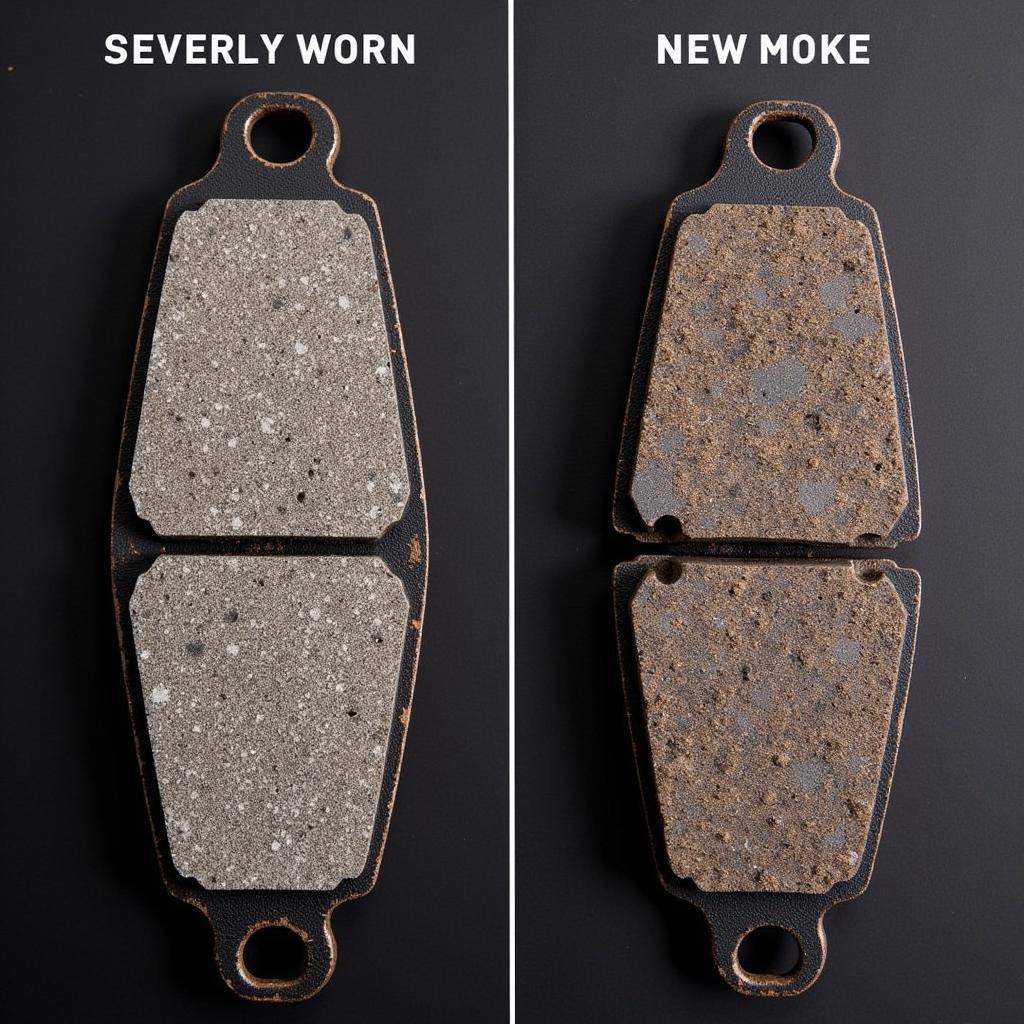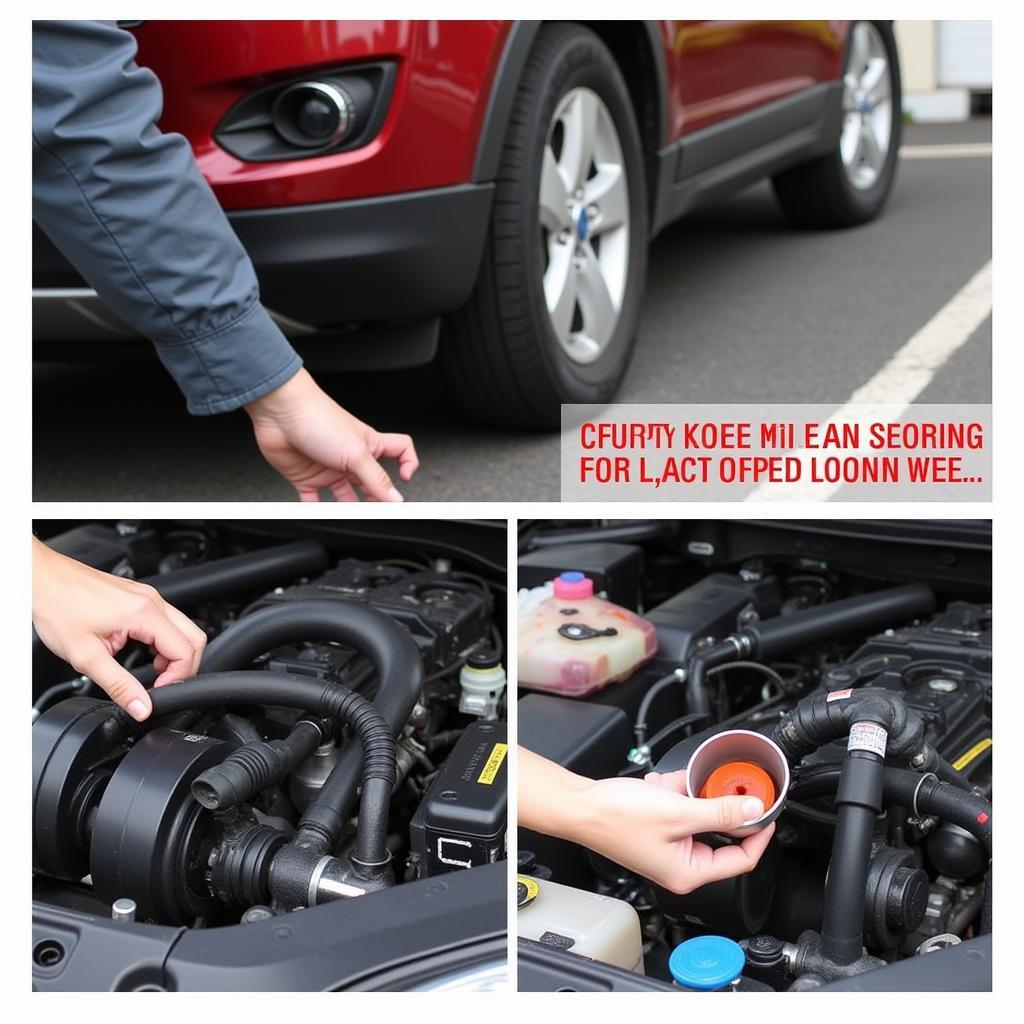The brake pad warning light on your Peugeot 406 is an essential safety feature designed to alert you of potential braking system issues. When illuminated, it signifies that your brake pads have worn down to a point requiring immediate attention. Ignoring this warning can lead to compromised braking performance and potentially dangerous driving situations.
Understanding Your Peugeot 406’s Braking System
The Peugeot 406, like most modern vehicles, employs a disc brake system. This system utilizes calipers to squeeze brake pads against rotors attached to the wheels, generating the friction needed to slow down or stop the vehicle. Over time, the friction material on these brake pads wears away.
Common Causes of the Brake Pad Warning Light
While worn brake pads are the most common culprit behind the warning light, other factors can contribute to its illumination:
- Worn Brake Pad Sensors: Most Peugeot 406 models have sensors embedded within the brake pads. These sensors trigger the warning light on your dashboard when the pad material wears thin.
- Low Brake Fluid: Brake fluid is the lifeblood of your braking system, transmitting the force from your foot on the brake pedal to the calipers. A leak in the system can lead to low brake fluid, triggering the warning light.
- Faulty Brake Pad Sensor Wiring: Wires connecting the brake pad sensors to the vehicle’s electrical system can become damaged, leading to a false warning light.
- Issues with the ABS System: While less common, problems with the Anti-lock Braking System (ABS) can also activate the brake pad warning light.
 Peugeot 406 Brake Pad Sensor
Peugeot 406 Brake Pad Sensor
Diagnosing the Problem: What to Check First
If your Peugeot 406’s brake pad warning light comes on, it’s crucial to investigate the cause promptly. Here are some initial steps you can take:
- Check Your Brake Fluid Level: Locate the brake fluid reservoir under the hood (refer to your owner’s manual for its exact location). If the fluid level is below the minimum mark, it indicates a leak requiring immediate professional attention.
- Listen for Unusual Noises: Screeching, grinding, or scraping sounds when you apply the brakes can indicate severely worn brake pads.
- Inspect Your Brake Pads (If Possible): If you’re comfortable with basic car maintenance, you can visually inspect the brake pads. Look for significant wear on the pad material.
When to Seek Professional Help
While checking the brake fluid level and listening for unusual noises can provide some initial clues, it’s crucial to remember that diagnosing brake system issues accurately often requires specialized knowledge and tools. If you’re unsure about any aspect of your brake system’s condition, it’s always best to err on the side of caution and seek assistance from a qualified mechanic specializing in Peugeot vehicles.
The Importance of Timely Brake Pad Replacement
Timely brake pad replacement is essential for maintaining your Peugeot 406’s optimal braking performance and ensuring your safety on the road. Driving with worn brake pads not only compromises your ability to stop effectively but can also lead to:
- Damaged Rotors: Driving with worn brake pads causes metal-on-metal contact, leading to scored or warped rotors that may require expensive replacement.
- Increased Stopping Distances: Worn brake pads significantly reduce braking efficiency, increasing the distance it takes to bring your vehicle to a complete stop.
- Brake Failure: In extreme cases, driving with severely worn brake pads can lead to complete brake failure, putting you and others at serious risk.
 Worn vs. New Peugeot 406 Brake Pads
Worn vs. New Peugeot 406 Brake Pads
Remote Diagnostics and Programming: The Future of Car Repair
Advancements in automotive technology have paved the way for innovative solutions like remote diagnostics and programming. These services allow skilled technicians to remotely access your vehicle’s computer system, often via a dedicated device that plugs into your car’s OBD-II port.
-
Identifying Issues Quickly: Remote diagnostics can quickly pinpoint the root cause of warning lights, including the brake pad warning light.
-
Software Updates and Programming: In some cases, brake system issues might stem from software glitches. Remote programming allows technicians to install software updates or reprogram certain modules remotely, potentially resolving the issue without a physical visit.
“Remote diagnostics and programming are transforming the way we approach car repairs,” says John Miller, a senior automotive engineer specializing in French car brands. “These technologies offer greater convenience for car owners and enable us to diagnose and, in some cases, even fix certain issues more efficiently.”
Peugeot 406 Brake Pad Warning Light: Prioritizing Your Safety
The brake pad warning light on your Peugeot 406 should never be ignored. It serves as a vital safety indicator, alerting you to potential issues with your braking system. Regular maintenance, timely brake pad replacement, and addressing warning lights promptly are crucial steps in ensuring your Peugeot 406’s optimal performance and your safety on the road. Don’t hesitate to seek professional assistance if you suspect any problems with your brakes.

